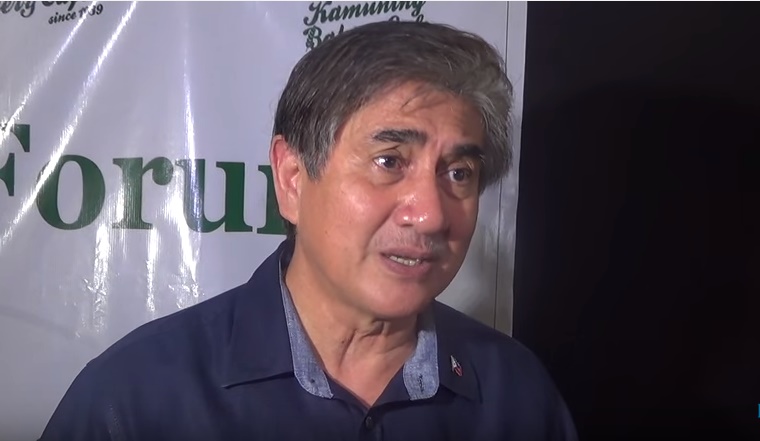With the layout provided by a mole within the Presidential Security Command, the putschists thought they had a cakewalk to the Palace and could even hold out for three months, knowing its freezers were filled with caviar and ham.
They were also prepared to die.
But the putsch was aborted before it could get off the ground. And the dashing colonel and his band of 30 soldiers took to Camp Aguinaldo for a last stand.
Thirty years after putting on a 70-pound flak jacket inside the camp along the country’s busiest highway, then Col. Gregorio “Gringo” Honasan, now a senator, is still an angry man.
Honasan is irate at what he called as the “organized hypocrisy” of critics who continue to belittle the military’s role in the 1986 Edsa People Power Revolution which ended the Marcos dictatorship.
The former Army colonel said that unlike the self-styled “superstars” of Edsa, he and his allies in the military component, including then Defense Secretary Juan Ponce Enrile and Lt. Gen. Fidel Ramos, never claimed that the uprising would not have happened without them.
“When the Filipino people get together with soldiers under a moral leadership, change is possible. That’s the ingredient of people power, not just the people on the street. A military component, a moral leadership, a common rallying point. There were no superstars among us,” Honasan said.
He said he had become numb hearing self-styled experts talk, year in and year out, about what happened during that fateful Saturday, Feb. 22, 1986, when he and officers and men of the Reform the Armed Forces Movement (RAM) were locked and loaded to launch their assault on Malacañang.
“Just watch the TV, there are too many so-called experts commenting on the event. Most of them were not there and some were not even born then. I was there and I have pictures to prove it,” Honasan said. “Why should they know better than us? How can you give your version of history when you’ were not even there? This is what I don’t like, this organized hypocrisy,” he added.
The narrative was: Enrile, Honasan and the RAM officers had planned to storm Malacañang and establish a military junta; the plot was aborted; they were forced to hole up in Camps Crame and Aguinaldo; a flood of demonstrators outside the gates saved the soldiers from the wrath of Marcos and Gen. Fabian Ver.
‘We took action’
“They say we were trapped in a corner in Crame, Aguinaldo and that we were rescued. In a way that’s true, but we were not like rats trapped in Crame and Aguinaldo. Where have you seen a revolution that came up spontaneously in four days? We had plans and we took action,” Honasan said.
While Enrile and Ramos were doing the rounds talking to politicians and senior officers, Honasan said that the RAM leaders had been recruiting young officers, Rangers, Special Forces, and jet and helicopter pilots three years before the Edsa uprising.
“People power was an act of God, the people did not plan for that,” Honasan said.
If there was a people’s rally that was planned, he said it was supposed to be done by the so-called “Council of Trent”—the group of clerics and businessmen advising then opposition leader Corazon Aquino—to stage diversionary demonstrations at Mendiola gate as early as December 1985 to weaken the forces guarding Malacañang.
Honasan lamented that some sectors tended to belittle the military’s role in the uprising.
“We were ready to lay down our lives, our family’s future when we agreed to assault Malacañang. We were 30 against 2,000 guards inside,” he said.
The senator said his team, familiar with the Palace layout provided by a mole in the Presidential Security Command, had planned “high explosive entry.”
“How romantic and how crazy our thoughts back then. We believed we could take over by having the element of surprise. We knew we could barricade inside the Palace for three months with its walk-in freezer full of caviar and ham,” he added.
Distortion of events
Former National Security Adviser Jose T. Almonte, a RAM founder, had claimed in his memoir released last year that Honasan had planned to kill the dictator Ferdinand Marcos and his family.
Honasan did not like Almonte’s “distortion” of the events just to sell a book. “The original plan was to attack Malacañang, not harm its occupants but gain control over them, and to present them to the National Unification Council for disposition,” he said.
He said he and his team were crying when they talked about having the chance to know the time and place of their death.
Honasan said the biggest myth of the Edsa People Power Revolution was that it was planned to create an “overnight change of the system.”
He said nation-building took time and some might not even be able to experience the change in one’s lifetime.
For Honasan, the biggest turning point in that fateful weekend was when Enrile and Ramos crossed from Aguinaldo to Crame to consolidate their forces at 2:20 p.m. on Feb. 23.
Turning point
“Our biggest fear was Sunday afternoon when we crossed from Aguinaldo to Edsa. We were not sure if the millions outside the gates would mob us. We were not sure if they understood what we were doing. Then we heard shouts of support, so we knew they were one with us,” Honasan said.
Three decades and four terms as a senator later, he said that it was time for the country to move forward and let justice take its course on the Marcoses’ human rights and ill-gotten wealth cases.
